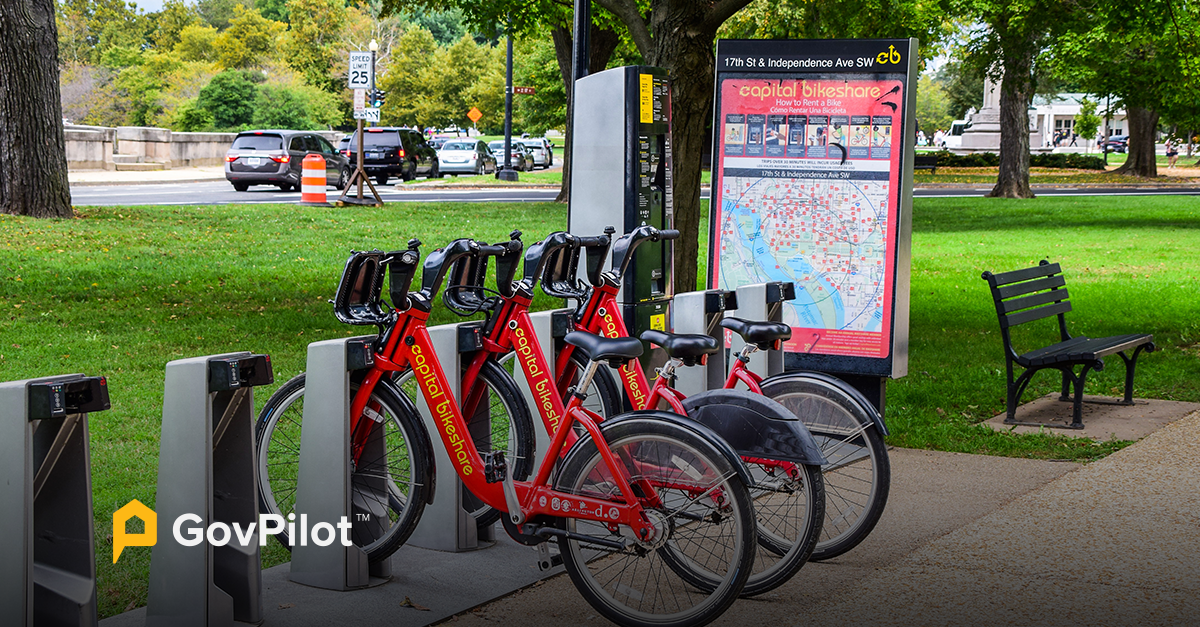The growing popularity of electric bikes in cities nationwide is an exciting development in the use of transportation technology. While electric bikes are a new and convenient addition to many cities, it is important that public officials understand both the pros and cons of integrating these fast electric bikes into their community. This article will provide information about the function of electric bikes and how they can be safely utilized in your community.
Read on for help making decisions around local policies pertaining to electric bikes and how these decisions can improve your communities economic development.
What Are E-bikes? Why Are They Growing Increasingly Popular?
Electric bikes are exactly what they sound like: bikes powered by an electric motor that engages when riders either push a button or pump the pedals. These bikes require no special license or permit to operate and are easy to ride, because they move very similarly to traditional bicycles.
Cities and towns of all sizes have recently accepted electric bikes into the infrastructure of their communities. This mode of transportation is convenient and easy to understand which makes it so popular; e-bike purchases even surpassed traditional bike purchases in the past year, nationwide.
Pros & Cons of Electric Bikes at the Local Level
Obviously, there are major pros to a fast-paced bicycle that can get you across town without so much as breaking a sweat. Yet, there are reasonable safety concerns for both the rider and nearby pedestrians.
Here’s the pros and cons for your local government to consider when determining local policy:
The Benefits of Electric Bikes
1. Easier Accessibility to Get Around Town
Electric bikes are designed to create an easier, more convenient riding experience than traditional bikes because with faster and effortless pedaling. The ease of physically riding these bikes makes getting around town quick and more effortless than walking, with speeds even comparable to cars. Some cities even have e-bike rental docs where people can rent a bike for a couple of minutes and then park it at one of many convenient e-bike stations.
2. Reduced Usage of Cars
E-bikes make local travel so simple that people often opt to ride an e-bike around town rather than driving their car. Riding electric bikes is a great alternative to driving cars which decreases the overall use of cars in your community. Less usage of cars only increases local sustainability and has a positive impact on the environment, especially when people develop the habit of riding e-bikes over driving cars.
3. Increased Turnout at Public Parks
The turnout at public parks and other community areas increases when people have the ability to take a convenient ride on their e-bike and dock it for a quick stop. Often bike routes lead right to or through public parks, which also increases the amount of visitors to the parks.
Accessibility to local parks is said to increase the local quality of life and increase property values.
4. Increased Exercise and Public Health
Biking is a healthier form of around-town travel than driving. Biking is already a very popular form of exercise for many people, and introducing e-bikes in your community can encourage more sedentary constituents to make a healthier choice for getting around. When more people in the community are biking regularly, the form of exercise is integrated into their routine and improves the overall public health as the popularity of biking grows.
The Cons of Electric Bikes
1. Dangerously Fast Speeds
E-bikes are convent because their speeds rival that of a car driving in residential areas, however their speed is also a reason to be cautious of the bikes. Electric bikes can reach average speeds of 20-28 miles per hour. These speeds can be dangerous for inexperienced riders on the road, especially when driving through road lanes with cars.
2. Inconvenience for Walking Pedestrians
Walking pedestrians will have to be aware of not only cars on the road, but e-bikes that they might not be expecting, as well. The speed of the bikes may confuse walking pedestrians who believe that the bikes are not a threat when crossing the street. Increased awareness of e-bikes on the road is necessary to keep pedestrians out of harm's-way when navigating past both cars and the bikes.
3. More Congestion
The introduction of a new form of transportation will undoubtedly cause increased congestion on the roads, especially if the community does not have bike lanes integrated into the streets. Cars will have to adapt to making space for e-bike riders and the additional people traveling on the roads daily.
4. Youth Endangering Themselves and Others
The importance of e-bike safety cannot be stressed enough, especially with the bikes reaching such high speeds. Due to the fact that there is no age-requirement to ride these bikes, officials must assume that kids and teens will be increasingly taking advantage of this form of transportation. The youth riding these bikes will be less experienced on the road than adult drivers, and less experienced operating any vehicle with a motor, so precautions must be taken to ensure that children do not endanger themselves and others on the roads.
Policy Considerations at the Local Level
- Banning E-bikes Altogether: the only way to ensure that people do not endanger themselves when operating electric bikes is to remove the option of riding them altogether. Keep in mind, this is the most extreme measure, and in most instances, it's best to find the right balance of ensuring constituent safety without barring e-bikes entirely.
- Banning E-bikes in Specific Areas: banning electric-bikes in areas with heavy foot / car traffic is an easily enforceable local e-bike policy that will limit the risk of congestion and danger on the roads without making a complete ban.
- Age Restrictions: E-bikes can be dangerous for inexperienced riders. Creating electric bike regulations such as placing age restrictions on who is able to ride e-bikes decreases the likelihood of children/teens endangering themselves or others in public areas.
- Speed Limits: implementing electric bike speed limits onto the roads and pedestrian zones will deter riders from making reckless decisions or riding at a speed that could potentially cause an accident. Enforcing an E-bike speed limit will force riders to remain within the confines of what the law considers a safe speed.
- Helmet Requirements: an alternative to stopping people from riding electric bikes altogether is requiring that they wear the correct safety equipment to seriously decrease their risk of head injury.
- E-bike Registration: E-bike regulations such as officially registering e-bikes in the community is a simple way to hold the owners/riders of the bikes accountable for their actions on the road. Registering e-bikes as we do cars before they can be driven on the road makes it easier to keep records of who is trusted to operate these bikes. Government software can help with making e-bike license registration available from your government website.
- Creating More Bike Lanes: if less constituents are driving cars and instead opting for an e-bike, using municipal planning to establish bike lanes across your community is critical to encouraging public safety, reducing the number of cars, and encouraging accessibility to points of interest to increase local economic development.
Enforcing Local Regulations and Gauging Public Opinion
- Public meeting discussions: hold council meetings in order to gauge public perception on the issue and understand how constituents want to move forward regarding the integration of e-bikes in their community. Need tips on running effective council meetings? See our guide to Improving Public Meetings.
- Complaint management software: utilizing software that simplifies creating public reports will allow constituents to report instances where an E-bike caused a dangerous situation on the road. If a constituent is almost struck by an E-bike, they can let the local government know by reporting the issue so the frequency of dangerous instances can be tracked and monitored.
- Ordinance enforcement: Electric bike ordinances are vital to making E-bikes accessible and safe in a community. Make sure park officials and code enforcement officials are regularly checking areas where the E-bikes are banned. Ensure speed limits are in place and issue violations when needed to ensure Local e-bike laws are followed.
How Can Localities Issue E-Bike Violations on the Go?
GovPilot’s code enforcement software allows localities to issue violations and charge violators on-site with a mobile code enforcement application. The location of violations will be stored via a GIS map of your community as well, allowing local leadership to look for trends around where these violations tend to occur for future strategic planning.
Integrating Electric Bikes Into Your Community
Now is the time for local government departments to utilize available government technology and enforce the policies they deem appropriate for e-bikes. Consider your community and what can be achieved by integrating e-bikes alongside electric bike ordinances and policies for safe, easy transportation around town.
To learn more about GovPilot can help with code enforcement and beyond, book a free demo.
FAQs
What are electric bikes?
Electric bikes are bicycles that are powered by an electric motor. E-bikes reach speeds of up to 28 mph and are often driven on the road alongside cars in pedestrian areas.
How can electric bikes increase accessibility to your city?
Electric bikes increase accessibility in cities by creating a fast and convenient way to navigate throughout town without needing access to a car. These e-bikes are also a cheaper and more eco-friendly option for constituents to use.
Why are local regulations needed for e-bikes?
Local regulations are very important to implement when introducing e-bikes into your city because these are very fast bikes that hold potential risks for riders. The best way to mitigate the risk is to place laws and regulations around who is eligible to ride the bikes, where they can be used, and what speed they can reach.
How can local government officials enforce e-bike ordinances?
E-bike ordinances can be enforced through the normal legal process when a bike is registered with the locality before it is able to hit the roads. There is also complaint management software provided by GovPilot which allows local community-members to engage in civic engagement by reporting e-bike issues. This helps to manage and track reports of risky behavior or broken ordinances done by e-bike riders.
Read on:
- Continuity of Government: Government Procedures During a Crisis
- Government Cybersecurity: How to Prevent Ransomware Attacks
Sources







